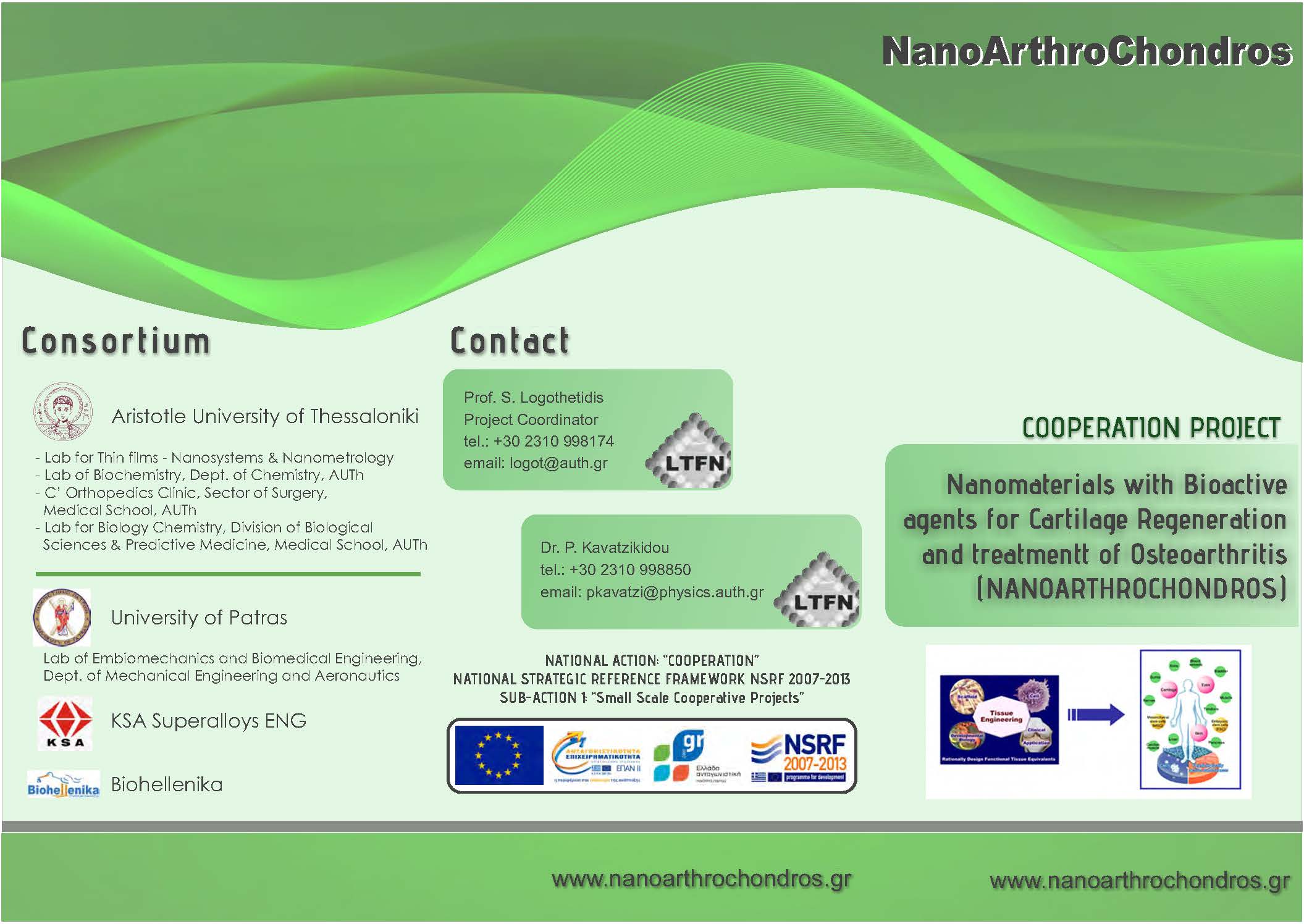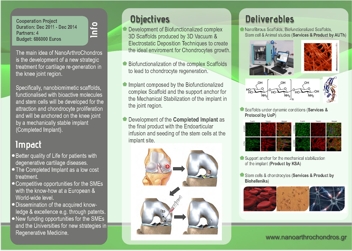Project Objectives |
|
The main idea of NanoArthroChondros is the development of a new strategic method/treatment for cartilage re-generation in the knee joint region with the generation of nanobiomimetic scaffolds, functionalised with bioactive molecules and stem cells in order to ensure the attraction and the proliferation of specific cells promoting in this way tissue regeneration but also the use of innovative techniques for the study of protein-cellular interactions at nanoscale resulting in the restriction of animal studies. NanoArthroChondros aims to be the foundation for the production of implants from biomaterials that regenerate tissue for various clinical applications in the field of Regenerative Medicine.
The objectives of NanoArthroChondros include: i) The development of biofunctionalised complex scaffolds consisting of thin films produced with 3D vacuum techniques and polymeric scaffolds developed by the Electrospinning technique so that they will create the ideal 3D environment for chondrocytes growth, ii) The biofunctionalisation of the complex scaffolds with the use of bioactive proteins factors that are expected to attract chondrocytes from the surrounding areas by imitating (the functionalised molecules) the natural environment space of the chondrocytes, to lead to the differentiation of the stem cells that are seeded in the degenerated area of the cartilage and to protect existing healthy and new chondrocytes from likely new degeneration, iii) The formation of the implant that will be composed from the biofunctionalised complex scaffold and the support anchor for the mechanical stabilisation of the implant in the joint region, iv) The restriction of experimental trials in animals with the development of novel optical techniques at nanoscale for the in-vitro monitoring of protein-cellular interactions in real time such as the adsorbed functionalized biomolecules, and cell adhesion, that will be compared with the findings of the evaluation of the implant under dynamic conditions in order to conclude for the effectiveness and the safety of the novel proposed biomaterials, v) The development of the completed implant as the final product of the proposed work with the endoarticular infusion and seeding of the stem cells at the implant site. |



